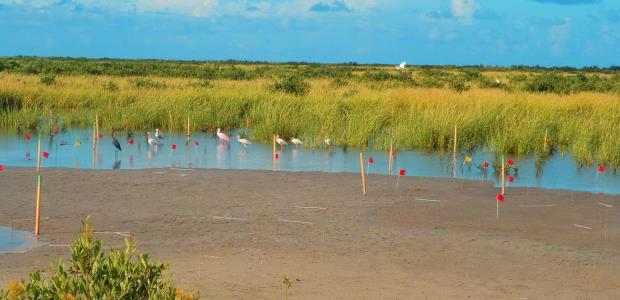
Study Warns of Big Impacts to Coastal Wetlands
"Most studies have focused on the impact of sea-level rise on coastal wetlands and have excluded the important role of temperature and precipitation," said Michael Osland, a USGS research ecologist and the study's co-author. "We know that climate influences how these wetlands look and work, so this study aimed to demonstrate the importance of considering these forces when modeling what coastal wetlands may look like in the future."
Changes in rainfall and temperature will transform wetlands in the Gulf of Mexico and around the world within this century, a study from the U.S. Geological Survey (USGS) and the University of Texas Rio Grande Valley has found. It indicates sea-level rise isn't the only aspect of climate change expected to affect these wetlands, as rainfall and temperature variations will impact them regardless of sea-level rise.
Some salt marshes are predicted to become mangrove forests as others become salty mud flats. "Coastal wetlands are an invaluable resource," said Christopher Gabler, a former USGS scientist who is an assistant professor at the Texas university and is lead author of the study, published Jan. 23 in Nature Climate Change. "They protect surrounding communities from storms and coastal erosion, support fisheries and wildlife, purify water pollution, and help prevent dead zones from forming in the Gulf."
"Most studies have focused on the impact of sea-level rise on coastal wetlands and have excluded the important role of temperature and precipitation," said Michael Osland, a USGS research ecologist and the study's co-author. "We know that climate influences how these wetlands look and work, so this study aimed to demonstrate the importance of considering these forces when modeling what coastal wetlands may look like in the future."
Their study relied on field studies at 10 estuaries in Texas, Louisiana, Mississippi, Alabama, and Florida; the field studies examined a variety of coastal wetland types, including mangroves, marshes, and salt flats.
"There are going to be winners and losers," Gabler said. "Some things are going to be better; some are going to be worse. The systems will do things differently, and 'different' is a challenge."
The research paper is available online at http://dx.doi.org/10.1038/nclimate3203. The project was supported by the USGS’s Ecosystems Mission Area and its Climate & Land Use Change Program and the South Central Climate Science Center.